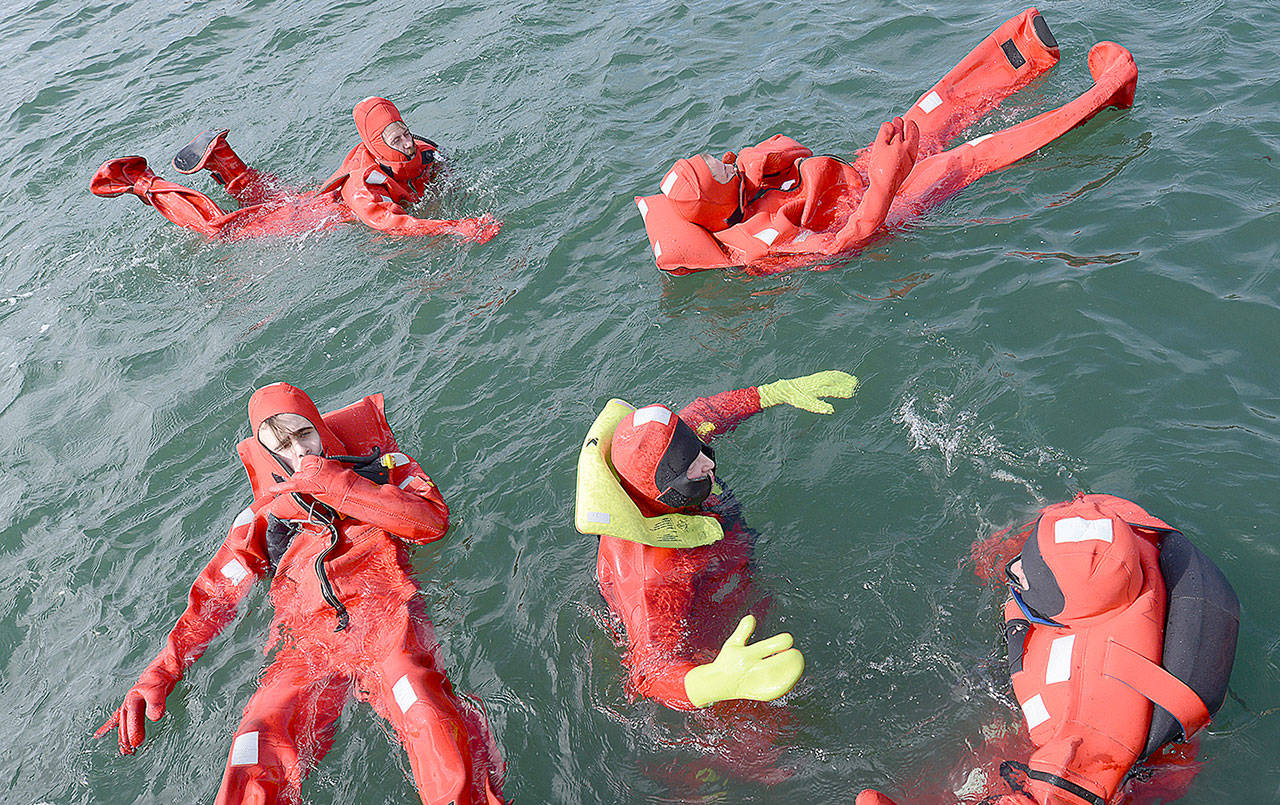The commercial Dungeness crab season is about to begin, and the U.S. Coast Guard has been training some members of the fleet for the past four months on how to stay safe in one of the most dangerous fisheries the state has to offer.
State Coastal Shellfish Manager Dan Ayres said the stretch of coast between Klipsan Beach — just south of Ocean Park — and the mouth of the Queets River is scheduled to open for gear setting Jan. 7, with harvest beginning Jan. 10. The rest of the coast could open for gear setting Jan. 3, but that is contingent on test results showing the crab are fit for harvest.
“The Dungeness crab fishery is one of the most dangerous occupations in the country,” said Curt Farrell, fishing vessel safety coordinator, Coast Guard Marine Safety Unit Portland. “There is no way to make it 100 percent safe, but our goal is to ensure that everyone that participates in the fishery has everything they need including the gear and knowledge to come home to loved ones. Nearly every survivor of an emergency situation involving a fishing vessel in the Pacific Northwest has participated in one or more of the drill conductor courses.”
The Coast Guard has conducted more than 90 fishing vessel exams and trained more than 75 fishermen during drill-conductor courses held at various ports in the Northwest since September, according to the Coast Guard release.
The fishing vessel exams ensure that the vessels are carrying the mandatory safety equipment including life rafts, immersion suits, flares, life jackets and other emergency equipment.
Commercial fishermen are required to practice emergency situations at least once per month and the drill conductor course trains fishermen how to run those practice sessions, according to the Coast Guard.
Participants practiced with emergency equipment required aboard most commercial fishing vessels — personal flotation devices, life rafts, immersion suits, distress signals and fire extinguishers. They learned and practiced emergency procedures like man overboard retrieval, abandoning ship, firefighting and flooding control through on board emergency drills and practical demonstrations, according to the Coast Guard.



